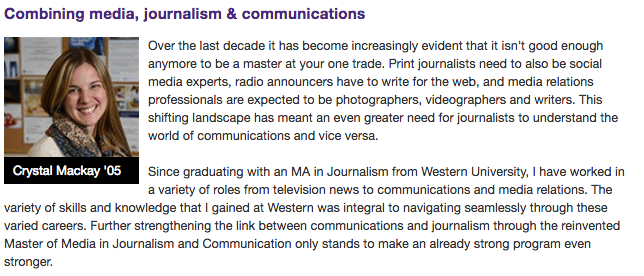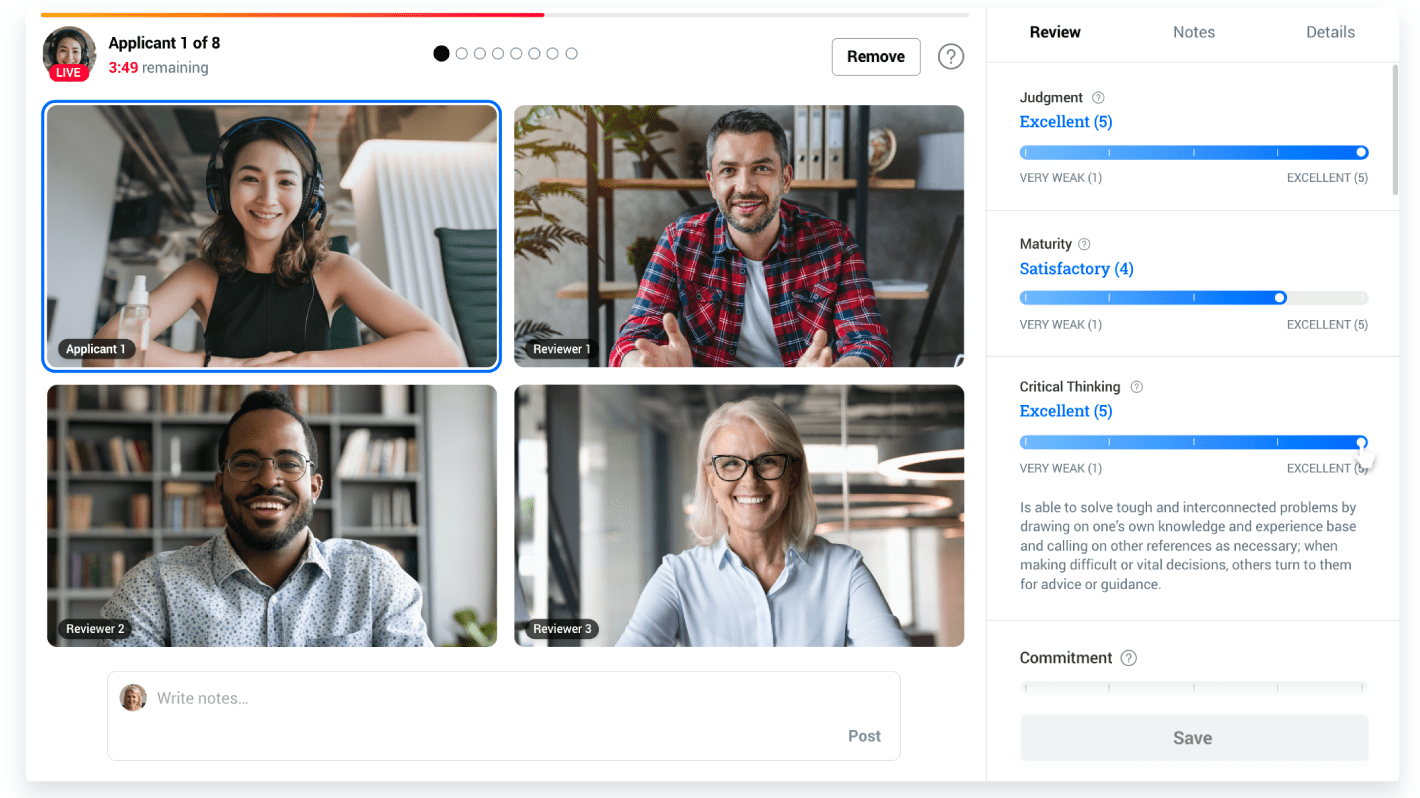You have seats to fill. Enrollment targets to hit. And a program identity to shape.
One of the most exciting challenges in the admissions world is the opportunity to launch a new program.
As you build your first class, you need to find a way to position and promote this program, without the ability to lean on success stories or employability stats. You’re asking applicants to take a chance on you and what you believe your program can do for them.
How do you launch a new program in higher ed, raise awareness of the unique offering, and create a compelling case to prospective students? We asked a new program that launched at Western University just last year.
We asked Mark Rayner, Program Coordinator of The Master of Media, Journalism and Communication (MMJC), a new program that launched at Western just last year. He joined us to walk through how Western’s new program positioned itself to meet changing student demands, increasing applicant volume by nearly 50 percent.
Whether you’re launching a new program in business, law, arts, or any other faculty, his tips will help you navigate these new grounds.
Case Study: Western University Master of Media, Journalism and Communication
In the early 2010s, Western’s Master of Journalism program came to a crossroad. The school had built a strong program with a rich history, and had many talented and successful alumni to show for it. But the workforce was changing. While the Master of Journalism was preparing graduates for traditional journalism, their career paths told a different story.
“Quite often, in a career, people will move back and forth in a continuum of journalism and communications. We wanted to prepare our grads for both.”
Western saw opportunity to evolve a program that had remained virtually unchanged for decades into something new that none of their competitors offered: The Master of Media, Journalism and Communication (MMJC). A program like this did not exist anywhere in Canada, and they needed to convince a new cohort to take a chance on this new, untested concept.
1. Engage Your Faculty's Alumni in the Conversation
When marketing your program, alumni can be your biggest advocates or your biggest enemies.
Making a significant change to a longstanding program with proud alumni was not a move to be taken lightly.
“From my perspective, I was worried there would be a negative from our Master of Journalism alumni because the old program was successful, and our graduates are some of the giants in the industry. We were concerned they might have a negative view of blending two separate worlds,” Rayner explained.
To combat that fear, his team took a proactive approach and reached out regularly with updates on what they were thinking and why, inviting feedback early and throughout the process. Before making any dramatic leaps, they were careful to ensure alumni knew what was happening, and why it was happening.
“A lot of our communication efforts in the early days involved talking to our alumni and making sure they understood what we were trying to do,” he explained. “You absolutely must engage your alumni in the process. They are your best allies, and you want them to help you and be on board.”
2. Build a Persuasive Case
One of the great questions when launching a new program, or completely overhauling an existing program, is how will you convince prospective students that it is first, credible, and second, valuable for their career?
It seems simple enough, but having a very strong understanding of a) what the market needs and b) how you will deliver it is critical in creating a compelling argument to why this program is right for a student.
Before ever announcing the MMJC concept, the team compiled market research, statistics, and anecdotal evidence from alumni and faculty to justify the need for this program.
Despite the faculty of Information and Media Studies’ small budget, the program was quite rich in one area: Strong communicators.
The MMJC team put their investigative research and writing skills into use to build a strong case and launched a new program website packed with evidence that backed up the direction they were going. This would become the hub for all information MMJC and the landing page for any and all marketing efforts.

3. Tell Stories
When prospective students are investing in a program, they will want to see success stories. That can be a daunting task when you, technically, don’t have any.
However, every new program comes out of a need. Even when you are marketing a new program, you can leverage recent grads from similar programs who can speak to the value of the new course material.
Find the graduates from your school who would have been in your program, perhaps they tried to specialize but a program offering wasn’t there, or they took a lot of courses that now fall under this new program, or studied with faculty you highlight.
The MMJC team spoke with recent graduates from the Journalism program to collect testimonials. They discussed how the new program was needed and aligned well with industry demands, the need for the transferable skills being offered, and provided the social proof that this program would give the best of both worlds.

Alumni Testimonial from MMJC website
Your faculty can also be massive advocates for new programming. Let them tell the story of what they believe students can achieve through the new program and feature their visions for a successful student.
4. Focus Your Budget on Measurable Marketing
Taking out a big bus ad near campus may seem like an easy way to get a new program recognized, but really, for the same cost you can take a much more controlled approach to marketing.
Online advertising such as Google AdWords, display advertising or retargeting through third-parties, as well as social media channels like LinkedIn and Facebook, are extremely targetable and measurable, which make them great for a small program with a very specific audience.
For MMJC, Rayner’s team focused most of their efforts on online advertising. Of course, not all qualified clicks turned into applications, but they were able to get the program in front of a specific audience, track results, and tweak messages, to find things that work.
5. Talk About It
Talking about the new program, on campus, in the community, and with alumni, was critical in enrolling the first MMJC class. When people heard about the new program, they were intrigued. When they talked to faculty, alumni, and staff, they only become more intrigued. Social proof proves, time and time again, to be extremely compelling marketing for a program. Rayner admits that although it’s not scalable, much of the enrollment strategy of the MMJC first class involved direct marketing.
Identifying your ideal students and selling to them on a personal level is time-consuming, but it pays high dividends when they can become your first true success stories and spokespeople.
Are You Positioning a New or Redesigned Program?
Launching a new program is a massive undertaking, but it’s also an extremely exciting opportunity for everyone involved, especially your first class of students. Consider how Western MMJC tackled the problem, and tweak it to suit your needs.
- Engage Alumni
- Build the Case
- Tell Stories
- Focus your Budget
- Talk About It
Thank you to Mark Rayner and the team at MMJC for sharing your story with us!
Note: The MMJC and Western's Faculty of Information and Media Studies are not clients of Kira Talent.



